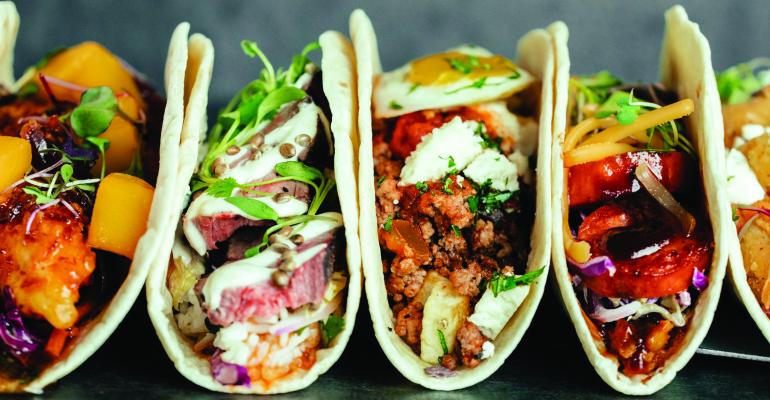Paul Allen is the cofounder and president of Nextbite, an ordering platform and virtual-brand company that recently merged those two components into one company. In the past year, Nextbite has teamed up with emerging chains, celebrities and chef-backed brands to facilitate delivery-only concepts.
Here’s what Allen had to say about what he sees as the restaurant trends for 2022.
See more predictions for menu trends, technology, customer experience and operations.
What are some trends you’re seeing up ahead for 2022?
 We've seen an increase [in off-premises] from 10% pre-pandemic to over 28% [post-pandemic] of all orders, coming through the digital channel. Through COVID, online ordering has been the mainstay of successful restaurants, but this trend began well before COVID. I think it's a reflection of not just the demands of the pandemic, but also the fact that consumers are increasingly showing a preference for off-premises dining. They want to eat what they want, when they want and where they want it.
We've seen an increase [in off-premises] from 10% pre-pandemic to over 28% [post-pandemic] of all orders, coming through the digital channel. Through COVID, online ordering has been the mainstay of successful restaurants, but this trend began well before COVID. I think it's a reflection of not just the demands of the pandemic, but also the fact that consumers are increasingly showing a preference for off-premises dining. They want to eat what they want, when they want and where they want it.
So that's just a big trend that we think is growing. It's accelerated by demographic changes, technology changes and, I think to some extent, it's a self-fulfilling prophecy as restaurants — brick and mortars and virtual restaurants — provide more variety and do so more consistently and efficiently. Consumer appetite and demand for that variety and in that quality, that diversity of products is just increasing.
Another trend is the configuration of restaurants, where we've been seeing this switch from what used to be 70% front of house [and] 30% back of house to this flip of 30% front of house and 70% back of house in terms of restaurant design. In terms of staffing and technology, that's being used as a wholesale change in the layout of new construction for restaurants, and it goes along with larger kitchens and smaller dining areas. We think that that's going to continue and accelerate through the next several years.
We're also seeing this increased focus on variety. That means the ability for restaurants to deliver multiple brands out of a single kitchen. And it's to satisfy what's just a juggernaut change in consumer expectations that they can, regardless of where they live, [get any cuisine]. It might be a small city in the middle of America. Consumers are being exposed to a broader range of cuisine types through social media and media in general. And so they want to try those. And I think what we're seeing is restaurants large and small responding to that by accommodating a broader range of cuisines — a broader menu out of a single kitchen.
We’ve been talking about a changing consumer. What does the new consumer for these emerging and virtual concepts look like? Have they changed?
The main consumer demographic changes we're seeing is a dispersion or expansion of the age range of consumers that are doing the online ordering. There is no one platform that that we can use to reach consumers from their teens through their late 60s and early 70s. It's a host of virtually every platform where we're finding success in reaching consumers.
And what about this robot revolution we’ve been seeing? Will that increase?
We're seeing tremendous investment in robotic technology and mechanization in the restaurant industry, which is driven by enthusiasm for lowering costs, and that's a direct response to labor challenges that everybody's aware of in the industry.
There are some major cities that are already testing robots for delivery: Los Angeles, Denver [and] Madison, Wisconsin. And we're confident in that technology that by the end of next year, we'll see dozens of additional cities.
On a broader scale, we expect it to take root and expand in the U.S. as one very specific type of robot: a sort of semi-autonomous small vehicle. There's a lot of other stuff that's going on like salad robots and burger flippers and things in kitchens. There's a good deal of funding that's going into that space because there is interest in trying to address the labor challenges that restaurants are facing and to improve unit economics for operators. We think that that trend is going to continue.
Click through the gallery to see emerging-chain predictions from restaurant industry experts and Nation’s Restaurant News.
Contact Holly Petre at [email protected]





